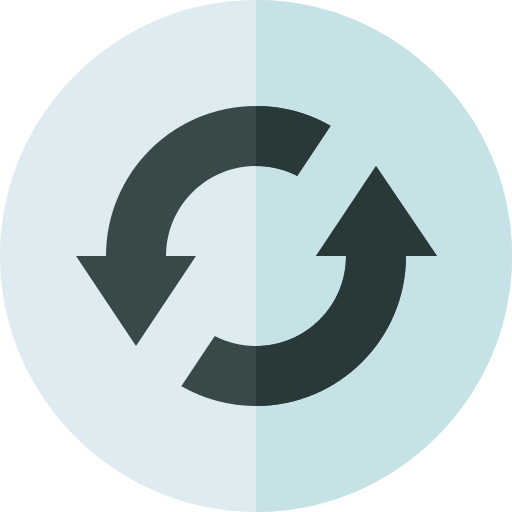Skill-Centric Hiring: The Art of Finding the Right Talent for Your Team
Looking for the right talent for your team?
Recruiting a candidate that ticks all the boxes is an art that you need to learn.
Why?
Because building a strong, skilled team of employees is one of the foundations of a successful business. From small businesses looking for growth to large companies looking to sustain long-term success, this applies to any company.
Attracting the right talent involves searching for people who fit the criteria and job requirements for the given position, along with finding candidates who suit the culture and mission of the business.
To carry out this task, managers need to work hand in hand with an HR team to establish interviewing and onboarding processes.
There are a few tips and steps that owners and managers should follow when recruiting. Let’s go through them so that your company can master the art of hiring the right talent for your business.
Create A Specified Application Process
The application process is the first step in any recruitment drive. Taking a haphazard or unplanned approach to this process can lead to thousands of people that don’t fit the role applying, as the job specifications are not clear.
To avoid a flood of irrelevant resumes, you need to streamline and refine the application process so that you can get fewer applicants with the right skill sets.
This means providing targeted information so that applicants know whether they’re suited to the role. You’ll need to specify everything from required experience to qualifications (if needed) and the responsibilities of the role.
In creating a specific application process that ticks all the boxes, you’ll reduce the chance of receiving hundreds of resumes that aren’t the right fit.
Ask Your Employees for Help
One of your best sources of information is your team. You can benefit from your team’s know-how when looking for the right talent, as they’ll have a deeper understanding of what the ideal candidate would offer.
In the end, any new hires are going to be working with the team that you’ve already hired. You want to find a person that will not only fulfil the role, but that will also integrate well with the team and fit in with the company culture.
Asking your employees and finding out the type of person that will help the team function more efficiently will help you to identify the right candidates during the application and interview process. Your employees should be used as a resource when going through both the hiring and onboarding stages of recruitment.
Assess Your Existing Talent
In some cases, the talent that’s the right fit for your team is right in front of you. So often, businesses end up hiring externally when the right person for the role is already working for them.
When you open the application process, ensure that everyone in your business knows about the role and what it entails. When asking your employees for input they may recommend someone. Don’t ignore this. Internal hires adapt faster and have a higher success rate, and they’re already working within a team.
However, even if you opt for an internal hire, you’ll need to follow much the same process as with an external candidate. This will ensure that all processes and procedures are followed and that there’s no room for misunderstanding or miscommunication.
Your internal hire will fill a new role, so you’ll need to incorporate some elements of onboarding to ensure they settle in as quickly as possible.
Get All The Necessary Paperwork in Order
Recruitment and hiring can be extremely arduous tasks, especially when it comes to the admin side of the process.
Paperwork like interview questions, assessments, and contracts should all be figured out and ready before the process even begins. This may involve multiple stakeholders, but it’s crucial to manage the hiring process.
With everything in place, you can then swiftly move applicants through the interview process without experiencing any bottlenecks. It also reduces the chances of losing out on a promising candidate due to not being prepared or ready to make an offer.
In essence, this step is all about efficiency, time management, and, in totality, saving money.
In business, time is money, and executing tasks in a fast and efficient manner can help speed up the process of getting new talent in the door.
Consider Outsourcing
Outsourcing the recruitment process to professionals skilled in finding and hiring talented employees might be a good way to get the job done quickly.
Often, small businesses with small teams simply don’t have the requisite time to spend on recruitment. Even if they’re using an applicant tracking system (ATS), there’s still a large amount of time that goes into the process.
This results in hiring people who don’t have the particular skills necessary or who don’t fit the company culture. This type of hire can lead to bigger problems down the line.
Outsourcing to a recruitment company can provide many administration and payroll benefits to your business. Additionally, it allows your human resources and management employees to focus on more of the core tasks that require immediate attention.
Offer Benefits That Appeal To The Right Candidates
Benefits can give you major leverage if you’re looking to attract higher-quality candidates that have extensive experience and are motivated. The key is to tailor benefits to the type of candidate that you’re looking for.
If your team is young and energetic, they may look for benefits like bonuses, employee growth plans, career development training, and social company events. If they’re older and more family-centric, benefits like health insurance and pension are going to hold more appeal.
If your benefits are well-thought-out and extend beyond just compensation, they can make finding the right talent easier, as only those they appeal to will apply. The right benefits also encourage retention, reducing costly employee turnover in the long run.
Post the Job Opening on the Right Platforms
In today’s world, recruitment is far less arduous than it was before the advent of the Internet.
Back in the “old days”, companies had to post job openings in newspapers, magazines, and bulletin boards. Other than these options, word of mouth was often the best way to find the right applicant.
Nowadays, businesses have access to a multitude of social media platforms, job listing websites, and apps that make hiring and onboarding easier. These tools are ideal for broadening the applicant base and finding specific employees that fit the bill.
Many websites like LinkedIn also allow companies to seek out people who fit the job description and headhunt them specifically. This creates an opportunity for targeted, skills-centric recruitment rather than posting a job opening that may attract the response of thousands of applicants.
Finding the right candidate could be as simple as figuring out which platforms target the talent that you’re looking for.
Select a Small Pool of Candidates to Interview
Interviewing is undoubtedly the longest part of any recruitment drive, and having too many applicants can lead to delays.
Rather than spreading your net wide, focus on the skills an applicant brings to the table, their experience, and their references. A good benchmark is to look for the 5 percent of candidates that provide 95 percent value to your company.
Then, select a pool of around 5-10 potential hires to interview. This will allow you to create proper comparisons between a small pool of applicants and create a shortlist.
Being able to tier a small group of interviewees will also mean that your business has a few options if a candidate declines the role.
Make Decisions Driven By Data
Data-driven decisions can be the difference between the right hire and the wrong one.
In today’s world, there are so many ways to track data and use it to our advantage. In the hiring process, you can compare data from different hiring sources to see where you find the best talent for your team and compare recruitment processes to evaluate where the strongest candidates are coming from.
Additionally, you can use data to draw up comparisons of candidates already in the interviewing stages. In fact, the more data you have available for every candidate, the easier it is to analyze them and determine the best person for the role.
This circles back to having a specified application process and asking the right interview questions.
Once a candidate is onboard, you can implement regular evaluations and KPIs. Using this data, you can pick up any gaps in the hiring and onboarding process that need addressing, and ensure they don’t happen the next time around.
Conclusion
So, you now know a few important tips to help you out during the recruitment drive. Following these tips will enhance:
- Efficiency when going through applicants
- Finding the right platforms to post job openings
- Creating a small group of promising interviewees
Your business should never take recruitment lightly. Especially if you’re looking to build a team for the long term.
The people who work for a company are crucial to sustainable success.
Mastering the art of finding the right talent is the key to building a skilled team that drives progress and profits forward.



